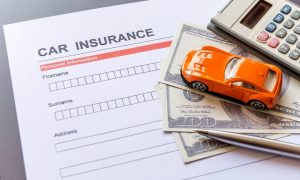Driving isn’t just about getting from point A to point B. It’s a performance of patience, decision-making, and emotional control. Traffic, delays, and careless drivers can test even the calmest person’s limits. For some, frustration turns into a fiery burst of road rage.
But what does this really mean? Road rage isn’t just honking at someone who cuts you off. It’s an emotional takeover that warps judgment, slows reactions, and fuels risk-taking. It transforms an ordinary commute into a dangerous gamble.
So, how does road rage affect driving skills and judgment? The answer is multi-layered. It disrupts mental clarity, distracts focus, and even triggers harmful physical stress responses. In this article, we’ll break down each effect, explore why it happens, and outline how drivers can protect themselves with defensive strategies.
Impaired Judgment

Judgment is the foundation of safe driving. Without sound judgment, even skilled drivers become hazards. Road rage undermines this foundation completely.
Anger blinds rational thought. A normally cautious driver might decide it’s okay to tailgate, block, or cut off another vehicle. These actions feel “justified” in the heat of anger but are nothing more than reckless retaliation.
Psychologists describe anger as a cognitive distortion. It narrows perception, turning every minor inconvenience into a personal attack. On the road, that distortion makes rational risk assessments nearly impossible. The driver is no longer weighing safety—they’re acting on impulse.
Think of judgment like a compass. Anger spins that compass wildly, leaving the driver without direction. One minute they’re upset about a slow car; the next, they’re weaving dangerously through lanes.
And it doesn’t stop with the angry driver. Impaired judgment forces other drivers to react defensively, sometimes making their own unsafe moves. In effect, one person’s poor judgment can snowball into collective chaos.
History offers sobering examples. High-profile road rage incidents often start with something trivial—someone merging too slowly or refusing to let another car pass. Within moments, decisions spiral out of control. Minor inconveniences escalate into collisions, injuries, or worse.
Reduced Focus and Concentration
Driving demands constant attention. Yet anger pulls that attention inward. Instead of noticing traffic lights or pedestrians, an enraged driver replays insults or glares at the “offending” vehicle.
This distraction is dangerous. Studies show angry drivers miss visual cues at higher rates than calm drivers. They may not register stop signs, lane changes, or even red lights. Their brain is too busy processing anger to process surroundings.
Target fixation is common. Instead of scanning mirrors, angry drivers lock their gaze on the car that upset them. This tunnel vision blinds them to everything else, including hazards.
It’s like trying to play a fast-paced video game while fuming about an argument. Your reflexes suffer, your awareness shrinks, and mistakes pile up. Only here, mistakes aren’t just lost points—they’re real-world crashes.
Ask yourself: how many times have you seen someone slam on their brakes because they weren’t paying attention? Now imagine they were distracted not by a phone but by their own fury. The outcome isn’t much different.
Increased Risk-Taking
Road rage often fuels reckless bravery—or at least the illusion of it. Drivers under the spell of anger take risks they’d normally avoid.
Speeding is the most obvious behavior. But risk-taking can also mean darting across multiple lanes, running yellow lights, or braking suddenly to “teach someone a lesson.”
Hollywood doesn’t help. Films often glamorize high-speed chases and daring stunts, reinforcing the idea that aggression behind the wheel is thrilling. Real life, of course, doesn’t come with camera crews and stunt coordinators. Real life comes with injuries, lawsuits, and lives cut short.
Research confirms that angry drivers are more prone to extreme speeding. They underestimate dangers because anger makes them feel invincible. The tragic irony? Anger convinces drivers they’re more capable, when in fact they’re less safe than ever.
And when two enraged drivers collide—figuratively or literally—the situation escalates fast. Tailgating turns into brake-checking. Brake-checking leads to swerving. Before long, one wrong move ignites a chain reaction.
Delayed Reaction Times
Quick reactions are the difference between a near miss and a tragedy. Road rage slows those reactions significantly.
An angry mind is overloaded. It’s juggling frustration, aggressive thoughts, and adrenaline surges. That mental clutter delays critical responses. When a child chases a ball into the street, milliseconds matter. A calm driver brakes instantly. An angry one hesitates.
Even basic tasks suffer. An enraged driver might miss when traffic ahead stops or fail to notice a merging car. These aren’t lapses in knowledge—they’re lapses caused by emotional overload.
Ironically, many angry drivers speed because they believe it saves time. Yet their delayed reactions increase the chance of accidents, which cause far greater delays. Rage defeats its own purpose.
Physical Stress Responses
Road rage isn’t just mental. It’s profoundly physical. When anger strikes, the body reacts with a surge of stress hormones like adrenaline and cortisol.
Heart rate spikes. Blood pressure climbs. Muscles tighten, often locking the body into stiff, jerky movements. Drivers may grip the wheel too tightly, sweat excessively, or breathe shallowly.
These physical changes interfere with smooth, coordinated driving. A tense grip reduces fine motor control. Shallow breathing limits oxygen flow to the brain, clouding thinking further.
Over time, repeated episodes of road rage create chronic health problems. Cardiologists warn that frequent spikes in blood pressure increase the risk of heart disease. In this sense, road rage endangers not only immediate safety but long-term health.
Think about it—your body is preparing for a fistfight, but you’re supposed to be navigating traffic. That mismatch makes every maneuver harder.
And stress doesn’t vanish once the episode ends. Hormone levels can stay elevated for hours. A morning rage-fueled commute may leave drivers on edge all day, affecting not just driving but workplace performance and family interactions.
Drive Defensively
The good news is that drivers aren’t powerless. Defensive driving provides a toolkit for resisting road rage and its effects.
The first step is self-awareness. Notice the early signs of anger. A pounding heartbeat, tightened fists, or muttered complaints all signal trouble. Recognizing these cues allows drivers to calm down before rage takes over.
Simple techniques help. Deep breathing lowers stress. Playing calming music can shift mood quickly. Some drivers keep snacks or water handy—low blood sugar often worsens irritability.
The second step is disengagement. Don’t take the bait. If someone cuts you off or gestures rudely, resist responding. Retaliation only fuels conflict. Remember: ignoring is not weakness—it’s wisdom.
The third step is perspective. Everyone makes mistakes. That slow driver in the left lane might be new, elderly, or simply distracted. Viewing errors as human rather than malicious lowers frustration.
Defensive driving also means planning ahead. Leaving early reduces stress caused by running late. Taking less congested routes, even if longer, may keep tempers cooler.
Finally, professional training can help. Some driving schools offer courses specifically designed to manage stress and build defensive habits. These programs reinforce techniques that keep emotions in check.
Conclusion
So, how does road rage affect driving skills and judgment? It cripples nearly every aspect of safe driving. Judgment falters. Focus fades. Risk-taking increases. Reaction times slow. The body suffers from stress. Collectively, these effects create dangerous roads for everyone.
But drivers can choose calm over conflict. By adopting defensive habits, practicing patience, and recognizing anger before it escalates, they can transform their driving experience.
The next time tempers flare on the road, remember: is this worth your safety? Is it worth your health? Almost always, the answer is no. Calmness protects lives—including your own.
Also read: What are the Tips for Preparing a Jobsite for a Crane Lift?
FAQs
Road rage is intense anger while driving, often expressed through aggressive or unsafe behavior.
It clouds rational thinking, pushing drivers toward impulsive and risky actions.
Yes. Anger distracts and delays the brain’s ability to respond quickly.
It elevates heart rate, raises blood pressure, and tenses muscles, all of which impair driving control.




